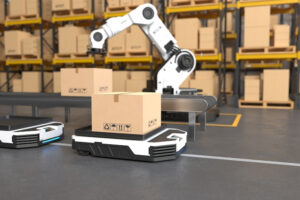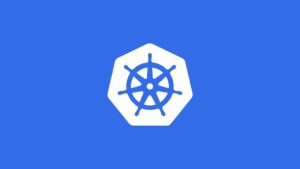Automate Your Next Job Scheduler Migration
Migrating from a legacy job scheduler? Automated migrations help keep existing data intact while minimizing the risk of manual errors and lost workflows.

70% of organizations are migrating to broader automation tools, according to a recent study by Enterprise Management Associates.1
Why Replace a Legacy Job Scheduler?
Legacy job schedulers were designed to support specific platforms and systems, mainframes and homogeneous IT stacks. Because of this, older job schedulers have limited capabilities and cannot easily integrate with new digital tools and technologies.
Today’s IT environments, however, are distributed, diverse, and dynamic. So that relying on a legacy scheduler is a bit like driving a sports car without power-steering. Sure, you can still drive, but you aren’t going to move very fast.
Modern IT Automation job schedulers provide IT with an arsenal of tools to automate, manage, monitor, and orchestrate workflows. This includes:
- Monitoring workloads in real time
- Integrating cross-silo, end-to-end workflows
- Managing workflows across multiple platforms and systems
- Provisioning resources across the organization
- Prioritizing SLA jobs
- Leveraging time-base, event-based, and constraint-based scheduling options
- Auditing and change management
- Template Reporting
- And more…
These capabilities are critical to the modernization of IT systems. Furthermore, legacy schedulers are often dependent on scripts. This means that, whenever a process changes, or a new dependency needs to be managed, IT must spend time updating scripts; or, if a new digital tool is being introduced, IT must spend hours researching, writing, and testing complex, custom scripts.
Scripts are error-prone, time-consuming, and resource intensive, requiring high-level IT personnel dedicate hours that should be spent on critical projects that are of higher value to the organization. This places additional pressure on IT personnel who are already strained by the IT Resources Gap.
Migrating from a legacy scheduler doesn’t have to be daunting. With the right migration strategy, IT can ensure a low-risk move to a workload automation and job scheduling solution that provides the tools and capabilities IT needs to develop scalable, integrative environments that keep pace with dynamic business demands.
Automated Migration Tools
Methods for migrating can vary depending on the organization’s needs, but generally, if a mid- to large-sized organization has more than a couple of hundred jobs to migrate, an automated migration tool is used.
A modern workload automation solution will likely include an automated migration tool. Depending on the legacy scheduler that is currently in place, the migration process can vary slightly. Usually, migrating the legacy scheduler’s applications to the new solution can be carried out through a command-line program. This will output an .xml file that can be imported into the new automation solution for IT.
Automated migration provides a secure, proven method of moving to a new automation software while keeping your existing data intact. This allows IT to minimize the risk of manual errors and of losing critical workflows.
IT Migration Services
IT should also take advantage of the technical expertise offered through the job scheduling solution provider. Having assistance from experienced, professional services personnel will provide an extra layer of security and save time and expenses, allowing IT to reach ROI faster.
Professional services can assist in:
- Reviewing existing jobs
- Preparing for implementation
- Building new workflows according to Best Practices
- Testing newly created objects
- Providing final review and documentation
A New IT Automation Strategy
The best job scheduler will likely provide additional capabilities that the legacy job scheduler lacks. This means that by moving to a new job scheduler, IT has the opportunity to design a cohesive automation strategy that consolidates and coordinates a variety of IT tools.
For example, instead of migrating complex workflows with a high failure rate into a new scheduler, IT should take the opportunity to redesign these workflows using the features and integrations offered by the new IT Automation scheduler. This will allow IT to design simpler, more powerful workflows.
Whether or not an IT team decides to start an automation strategy from scratch, redesigning workflows should be a part of every scheduler migration. By developing new workflows that leverage the capabilities of the new scheduler, IT can meet more SLAs and increase their rate of successful, on-time job completions.
Developing a new IT Automation strategy works well for smaller IT teams with fewer workflows to manage; however, larger organizations are not hard-pressed to find resources to commit to building out a new, holistic automation strategy.
Rebuilding workflows during a migration does have a few drawbacks:
- Increased risk of manual error, requiring more testing
- Requires more time and more resources to complete successfully
- Takes a longer time to roll-out, increasing the time to production
The benefits, though, are impressive:
- A clean slate to build a new automation strategy
- Simplified, powerful workflows
- The development of extensive in-house knowledge, from the beginning
- An IT Automation environment that drives change in business
How Long to Migrate to a New Job Scheduler?
IT should always map the dependencies between workflows and prioritize what should be moved first. This will help IT identify how many workflows, jobs, and objects need to be migrated, allowing IT to estimate how long the migration will take.
Ideally, an organization should contact an IT Automation provider at least six months in advance so that there is sufficient time for product training, installation, migration, and then testing and configuration of the new IT Automation solution.
Check out, “Best Practices for Migrating to a New Job Scheduler” for further tips and strategies that help optimize your job scheduler migration.
1.) Enterprise Management Associates, “The State of Enterprise Automation 2018”, Dan Twing, October 2018,
Ready to simplify your data warehousing with workload automation?
Schedule a demo to watch our experts run jobs that match your business requirements in ActiveBatch. Get your questions answered and learn how easy it is to build and maintain your jobs.







